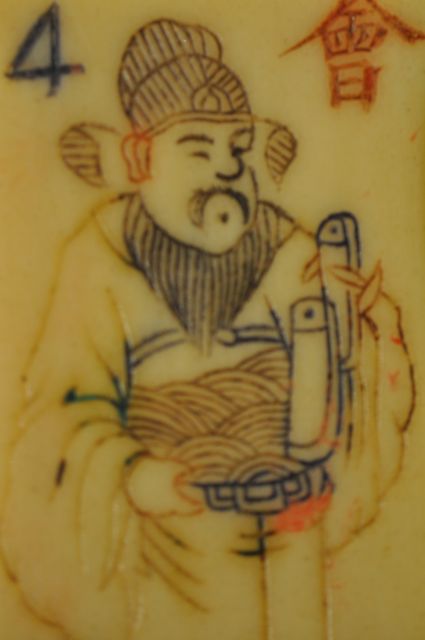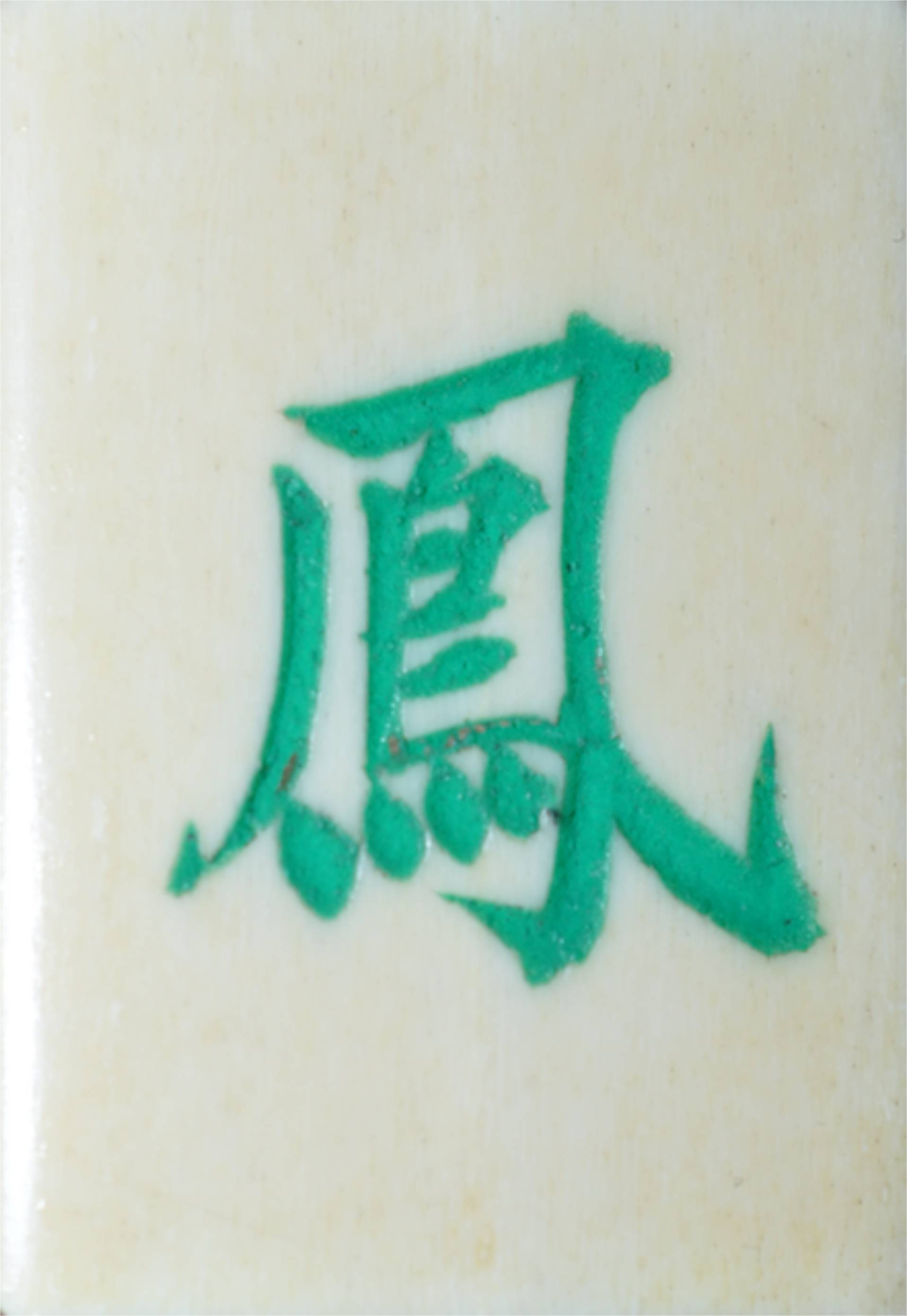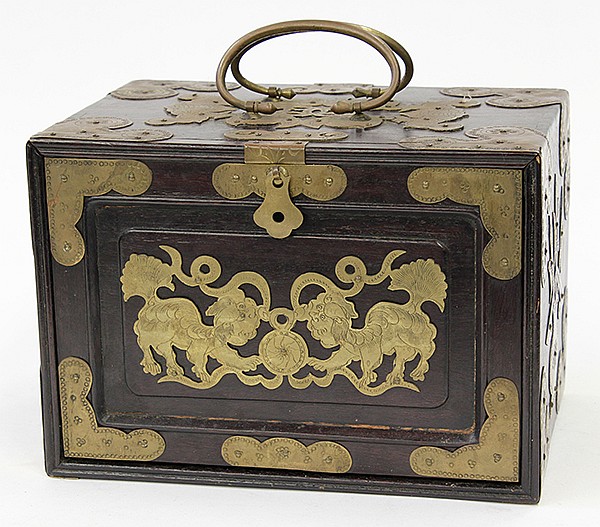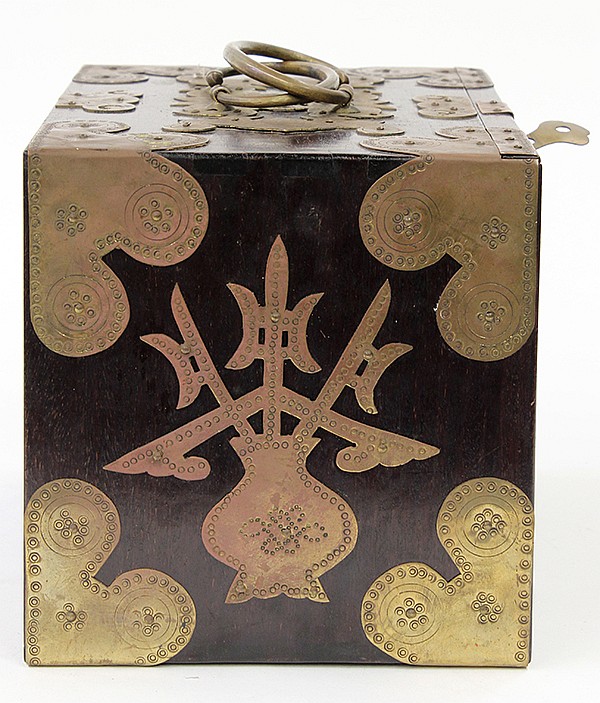
Here the Mahjong bone and bamboo Flower tiles are properly oriented in 1234 positions. A river is shown flowing through beautiful mountainous terrain. The Chinese character for mountain is seen on tile 2. Often Flower tiles show beautiful places in China. I love the details seen on the structure, including the stonework, the keystone on top of the arch and the roof supports. Remember these tiles are only an inch tall, so this is truly detailed carving.
Ray Heaton translated the tiles seen above, and they mean one of two things:
"Either "Green Hills Live Forever" or "Blue Mountains Live Forever". The words for Green and Blue are the same, as is Hill and Mountain. I think the full translation would be "May you live forever just as the Green Hills"... it seems Green Hills are associated more to a wish for a long life than Blue Mountains, but I suspect they're pretty much interchangeable!"




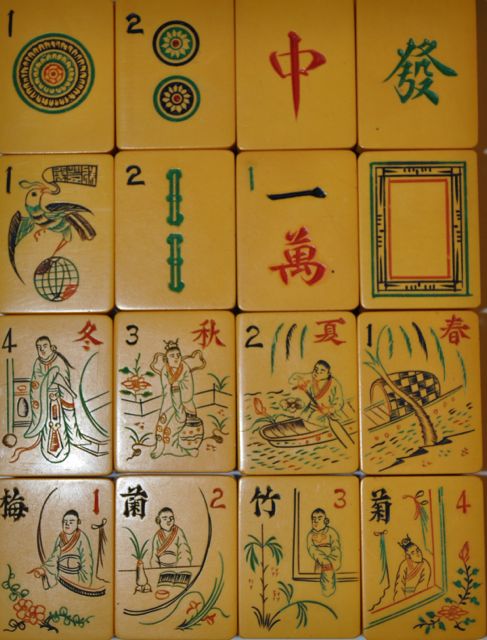
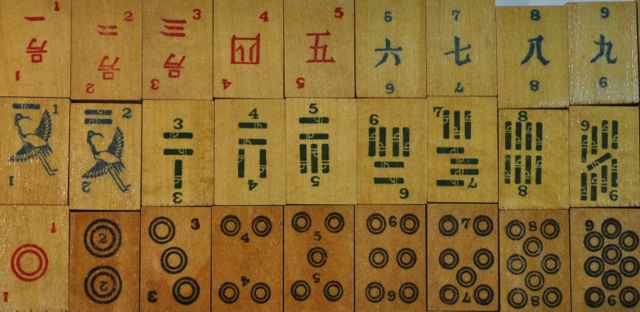

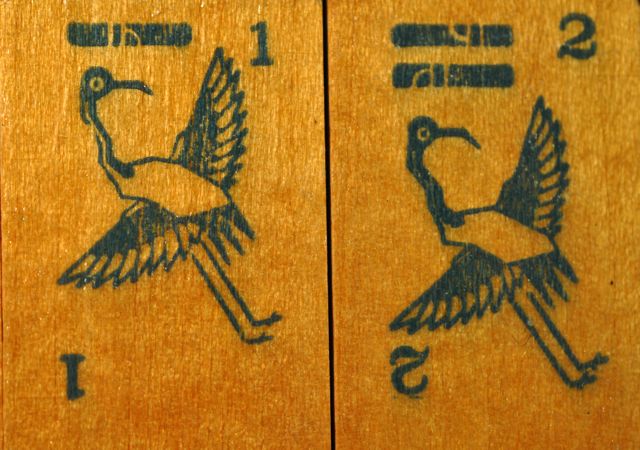
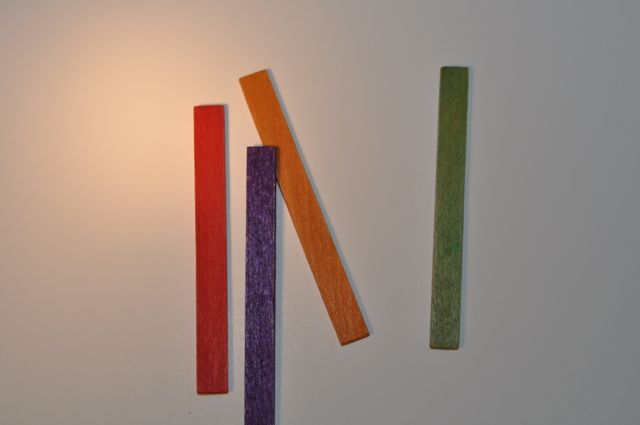
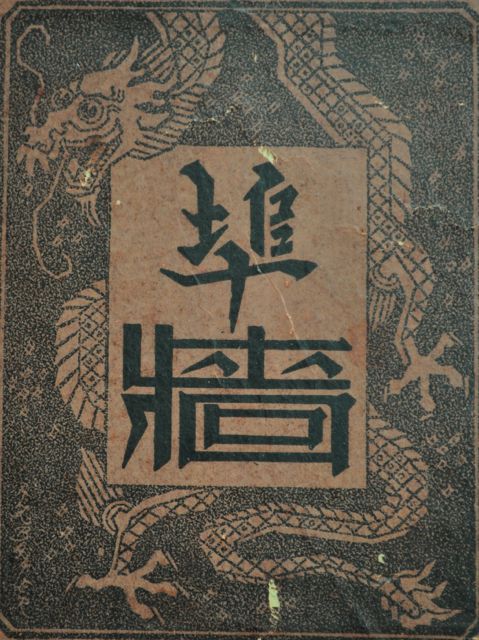
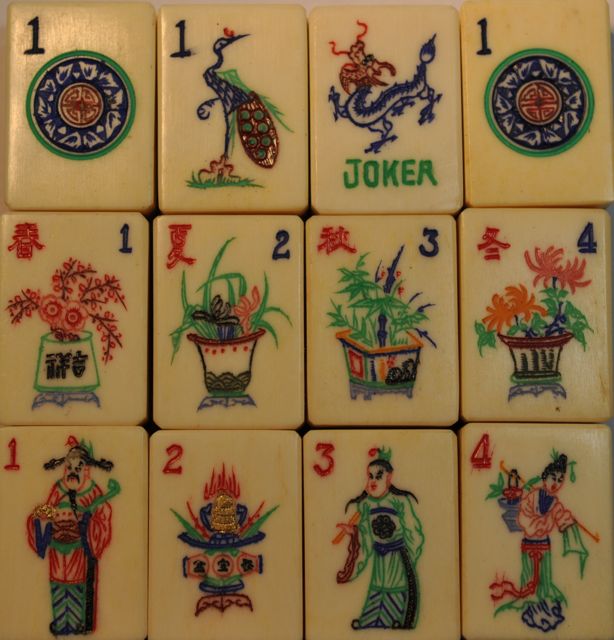 This delightful hand carved Mahjong set comes in a wood box with a sliding top panel. I love the Dragon Joker tile (I was lucky, there are 8 carved ones) and the One Dot with the symbol for longevity, Shou, in the center. The top row of Flowers are flowers: plum blossom, orchid, bamboo, and chrysanthemum, flowers usually seen when flowers are shown. The bottom row is a bit different: the rich man and the pot of gold, and two gods: according to Wikipedia probably Lü Dongbin, who dresses as a scholar and carries a sword, and Guanyin, the Goddess of Mercy. I love the gold paint used for the rich man, the pot of gold, and the spots on the peacock's tail.
This delightful hand carved Mahjong set comes in a wood box with a sliding top panel. I love the Dragon Joker tile (I was lucky, there are 8 carved ones) and the One Dot with the symbol for longevity, Shou, in the center. The top row of Flowers are flowers: plum blossom, orchid, bamboo, and chrysanthemum, flowers usually seen when flowers are shown. The bottom row is a bit different: the rich man and the pot of gold, and two gods: according to Wikipedia probably Lü Dongbin, who dresses as a scholar and carries a sword, and Guanyin, the Goddess of Mercy. I love the gold paint used for the rich man, the pot of gold, and the spots on the peacock's tail.

